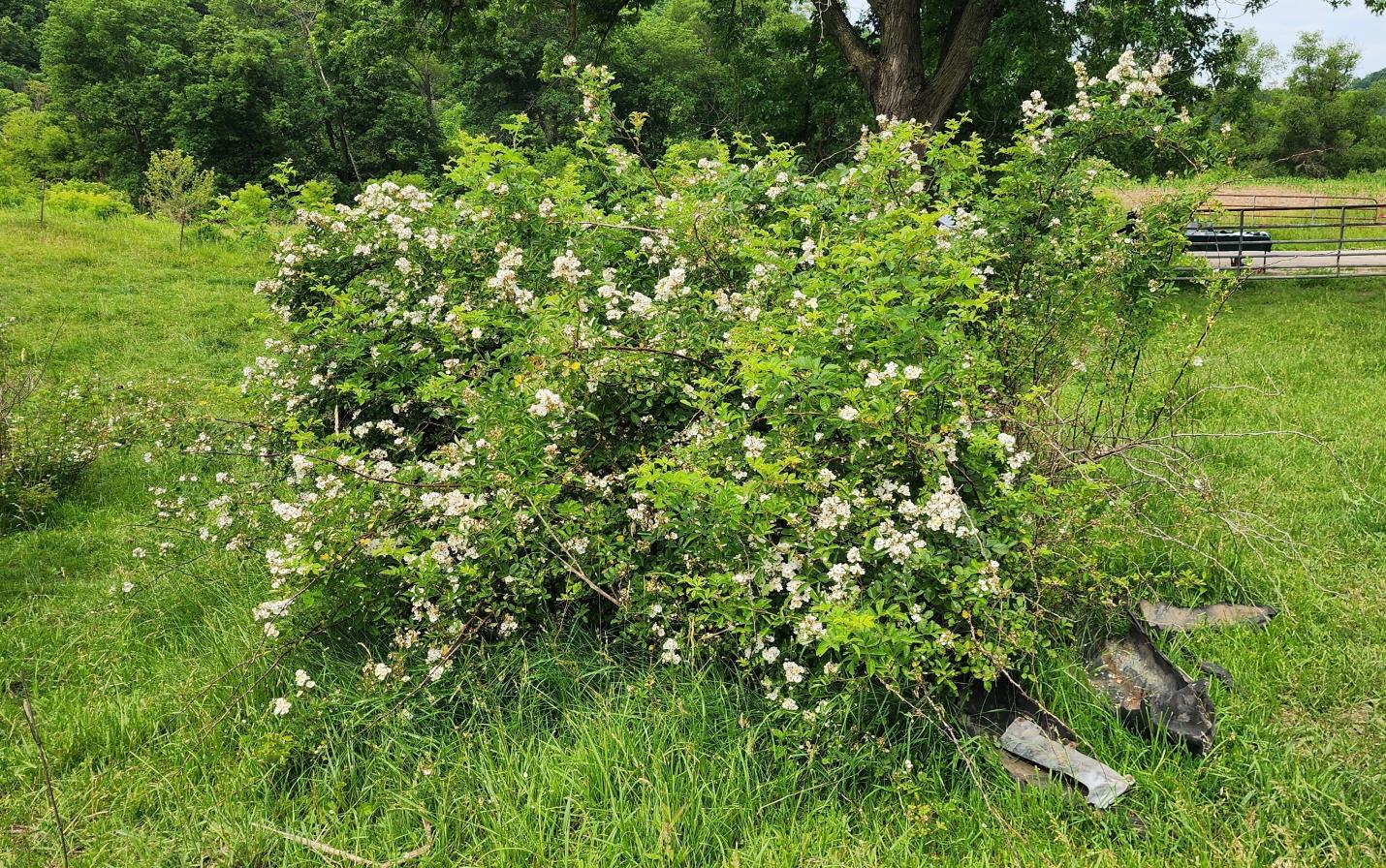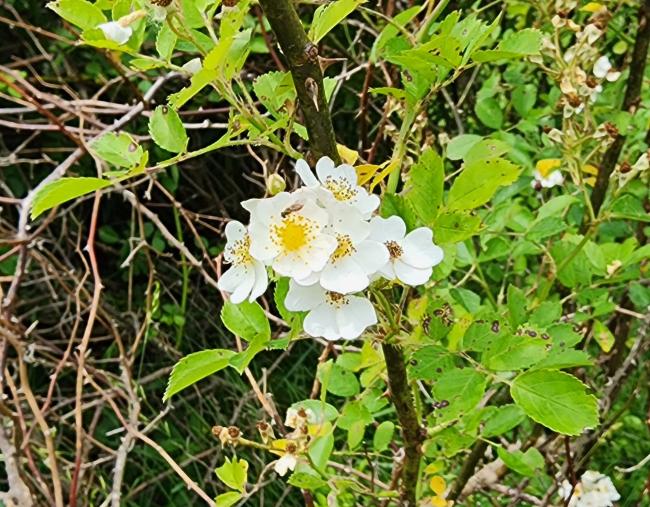
Invasive plants are one of the greatest threats to preserving the unique biodiversity of the Driftless Area. Multiflora rose (Rosa multiflora) is a beautiful, but invasive plant that is quickly spreading across the Midwest. Don’t let its beauty fool you, the elegant white blossoms hide painful prickles below. Multiflora rose was originally introduced to the United States in 1811 as an ornamental garden plant, but it was also used for erosion control and natural fencing.
Despite providing a small amount of nutrients for native pollinators, multiflora rose has a very negative impact on native biodiversity. It crowds out native species, degrades wildlife habitat, and creates a nuisance for people and livestock. Multiflora rose commonly takes over pastures and becomes difficult to stop once established. This rose species becomes invasive very quickly. A mature plant can produce 500,000 seeds each year! Each of these seeds can sprout and quickly mature, leading to near exponential growth without management.

Multiflora rose is most easily identified by its size and unique shape. It grows up and out, resembling a cascading fountain (top photo).Multiflora rose can grow very large, sometimes reaching 10 or 15 feet tall. The ends of the growing shoots produce large clusters of white, sweet-scented flowers. The leaves are small and compound, similar in shape to a common garden rose. The most sinister part of this plant is the prickles. They are recurved like a cat’s claw and are known to give cattle, deer, and other wildlife infectious wounds. These prickles earn multiflora rose a special honor: being the least favorite plant of the Conservancy’s land management staff!
Multiflora rose is most commonly found in pastures and woodland edges. Although other native roses grow in these habitats, they are much smaller and have pink or red flowers. Multiflora rose is the only species in Wisconsin with purely white blooms. Luckily, if you are preparing to fight multiflora rose invasion, there are several effective methods!
Multiflora rose can be controlled effectively by repeated cutting or mowing, and this method becomes more effective with careful spot treatments of herbicide. Foliar herbicide treatments of flowering plants are also effective, but herbicide should be carefully applied to maximize safety and limit over spraying. Goats and sheep are another effective tool for fighting multiflora rose invasions. Many landowners have found that four years of goat browsing can easily eliminate multiflora rose from pastures. Repeated springtime prescribed burns may be another effective tool for controlling this invasive species in fire dependent ecosystems.
No matter how you choose to control multiflora rose invasion, the goal should be to completely eradicate this aggressive species. Leaving just one plant could allow the next generation to re-invade previously restored areas. Your work removing multiflora rose directly impacts the health of the Driftless area. Do your part to save our native habitats by removing some multiflora rose today!